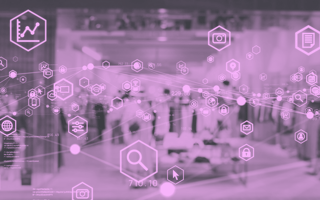The pandemic put e-commerce at the center of the retail universe last year, as lockdowns and store closures pushed record numbers of shoppers online. This development propelled online shopping to comprise 21.3 percent of total retail sales in 2020, compared to just 15.8 percent the year before.
Last year’s surge in online shopping may have started due to safety concerns, but once consumers saw how fast and easy it can be to get what they need from the comfort of home, many became permanent converts. More than half of respondents in a recent PwC survey about how Covid-19 had changed consumer behavior said they had become “more digital” in their shopping habits. Even in the three months from March to June of this year, PwC saw a 4 percent jump in the number of respondents saying they shopped online at least daily.
Will this trend continue? Probably, at least to some degree. But e-commerce will also face some challenges. A major one is replicating the personal touch of in-store shopping. What gets lost along the way when you trade browsing racks with in-person shopping assistants for scroll buttons and filters?
AI-powered personalization technology shifts the online shopping conversation from focusing on what’s lost in the transition online to what new possibilities it opens. With this technology, the old e-commerce experience transforms into a highly personal experience tailored to each specific customer’s idea of what online shopping should be. Here’s how to think about how AI personalization can impact e-commerce.
AI-Powered Personalization
The Traditional E-Commerce Experience
The personal nature of brick-and-mortar shopping is one aspect of retail that e-commerce brands have historically struggled to reproduce. Many brands have attempted to bridge the gap, offering their own versions of what they call personalization. Typically, though, platforms do little more than show a rotating carousel of suggested products.
Traditionally, e-commerce retailers have relied on a system called segmentation, in which customers are lumped into large groups based on demographics, with an overreliance on historical data riddled with fixed rules and stereotypeable categories like gender and age.
Some more advanced e-commerce storefronts leverage machine learning technology to look at the relationship between products, like discovering which items are often purchased at the same time. Instead, they really should be examining the relationship between consumers and products, like what types of colors, textures and items does this consumer click on and show interest in.
Both segmentation and flawed machine learning implementation miss the point, and neither creates the kind of personalized experience today’s customer seeks.
It’s true that segmentation might occasionally get lucky and recommend a relevant product or two for a shopper, but the method lacks any semblance of genuine personalization. It’s more of a one-to-many approach. The system shows the product to the whole group of consumers who fall into a prescribed segment, many of whom may have no interest in it.
Most of those product recommendations will fall well short of the mark, leading to frustration as consumers scroll through a cluster of haphazardly selected, impersonal suggestions. They may even abandon their shopping cart altogether.
E-commerce, but Make It Really Personal
New, AI-powered solutions can build unique behavioral profiles for every single customer to predict their next step. This is a one-product-to-one-shopper approach. By analyzing more than 300 data points about each user’s behavioral patterns, the AI engine can proactively predict what customers may be interested in next with a high degree of certainty.
Imagine a stadium full of people with a single sales rep stationed in the middle, pitching the very same products to the entire crowd. Pockets of individuals may, by chance, have some overlapping interests. But shoppers aren’t a monolith, and you shouldn’t market to them as if they were.
Now, imagine if every audience member in that stadium received an iPad connected to a dedicated, highly knowledgeable sales rep who is finely tuned into their likes and dislikes. That’s the level of personalization e-commerce brands should strive for.
AI enhances what’s possible by not only predicting a shopper’s behavior but by truly understanding their relationships with the products and content they see. For example, if a consumer lives in a cold weather climate, the AI can detect the types of sweaters, boots and pants they’re looking at to recommend options that offer similar use, materials and so on. It’s like having a personal shopper by their side in a physical store anticipating their needs before they even hit the next rack.
This kind of e-commerce shopping experience is highly adaptable, reacting and changing in real-time based on each customer’s demands and needs. If done right, no two customers will ever see the same experience.
AI-powered personalization provides consumers a one-of-a-kind shopping experience that, until recently, could only be found in stores. For e-commerce companies, personalization drives sales. Based on tests we’ve done with some of our clients, we’ve seen incremental revenue lift as high as 28 percent and average order value go up as high as 198 percent after implementation. If brands hope to build upon the momentum of last year’s online shopping frenzy, they can start by offering customers a level of customization and personalization they’ve never before experienced online.




